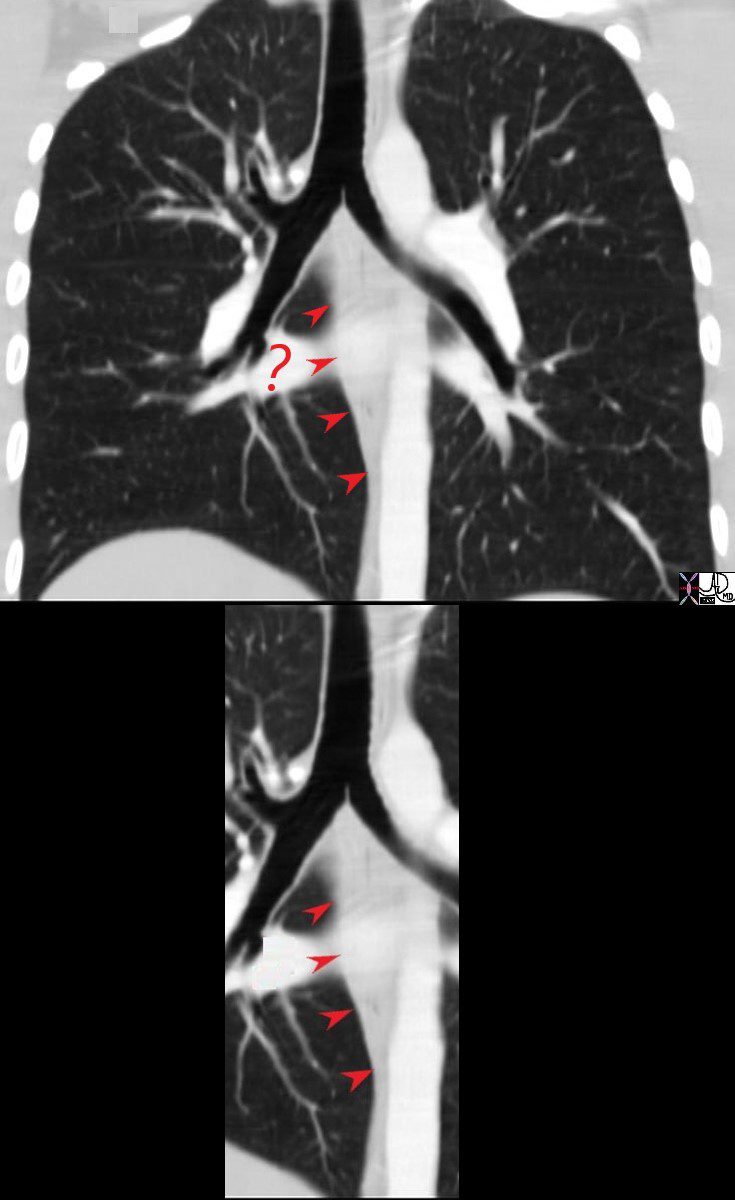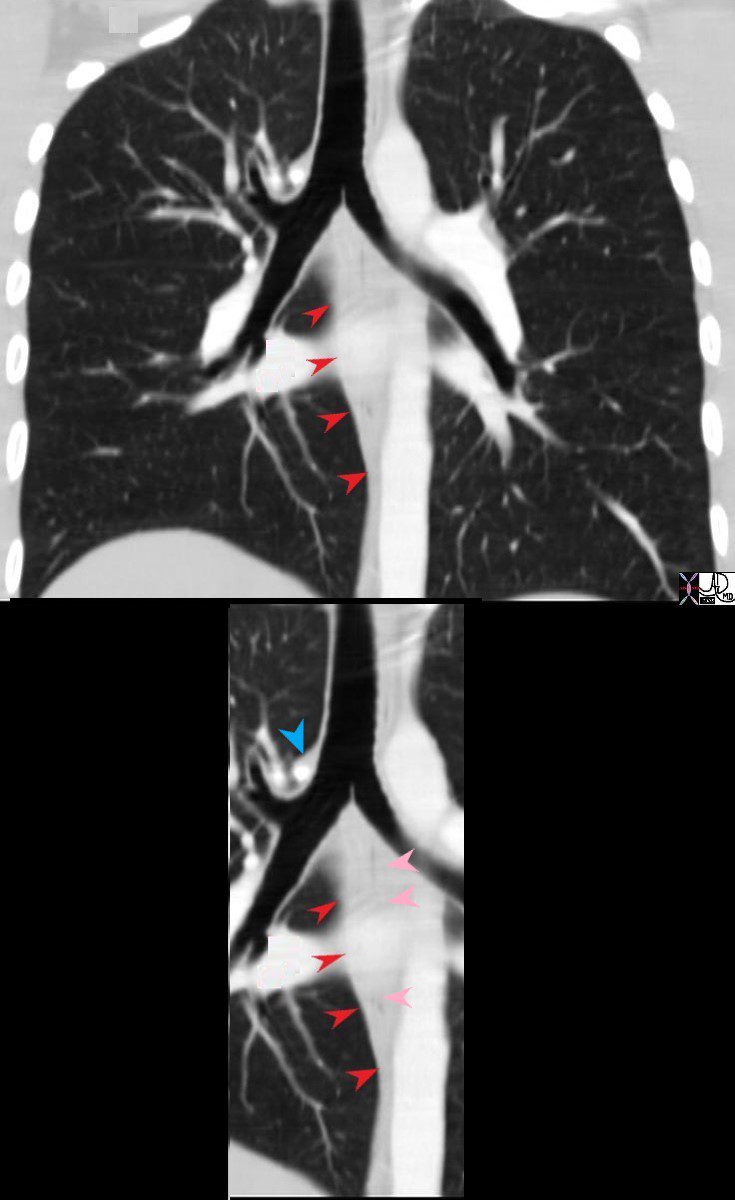- The azygoesophageal line is an
- anatomical landmark representing
the interface between the azygos vein and the esophagus, - typically located at the T5 to T6 vertebral levels.
- It serves as a
- critical
reference point when assessing the posterior mediastinum and - identifying surrounding structures.
- critical
- The azygos vein, which runs
along the right side of the thoracic spine- drains blood from the thoracic wall and upper lumbar regions into the superior vena cava, while
- the esophagus lies
- anterior to the aorta and posterior to the
trachea.
- Chest X-Ray (CXR):
- Appears as a thin vertical line on the right side of the mediastinum, extending downward from the azygos arch to the diaphragm.
- Normal Appearance:
- Smooth and curvilinear.
- Abnormalities:
- Deviation, widening, or irregularity suggests pathological processes affecting the mediastinum, esophagus, or adjacent lung.
- CT Imaging:
- Clearly visualizes the structures forming the line, including:
- The azygos vein, esophagus, and mediastinal fat.
- The interface between the right lung and mediastinal structures.
- Normal Line:
- A sharp, well-defined interface on axial cuts.
- Abnormal Line:
- Bowing, irregularity, or distortion due to mass effect, esophageal dilation, or other pathologies.
- Clearly visualizes the structures forming the line, including:
- anterior to the aorta and posterior to the
-
Common Causes of Abnormalities
- Esophageal Disorders:
- Esophageal Dilation:
- Achalasia, esophageal carcinoma, or strictures can displace or distort the azygo-esophageal line.
- Hiatal Hernia:
- Can cause a focal bulge in the lower portion of the line.
- Esophageal Dilation:
- Mediastinal Masses:
- Lymphadenopathy:
- From malignancies (e.g., lymphoma, lung cancer) or infections (e.g., tuberculosis).
- Mediastinal Tumors:
- Neurogenic tumors or esophageal tumors can cause deviation or widening.
- Lymphadenopathy:
- Azygos Vein Enlargement:
- Azygos Continuation of the IVC:
- Congenital anomaly causing a widened azygo-esophageal line.
- Venous Congestion:
- Secondary to right heart failure or superior vena cava syndrome.
- Azygos Continuation of the IVC:
- Pleural Disease:
- Pleural Effusion:
- May obscure the lower portion of the azygo-esophageal line.
- Right Lower Lobe Atelectasis:
- Causes a shift toward the collapsed lung, narrowing the line.
- Pleural Effusion:
- Other Causes:
- Vertebral Abnormalities:
- Scoliosis or kyphosis can distort the line.
- Subcarinal Pathology:
- Enlarged lymph nodes or masses in the subcarinal region.
- Vertebral Abnormalities:
Clinical Relevance
The azygo-esophageal line is a subtle but important feature in chest imaging. Changes in its appearance can provide clues to underlying mediastinal or esophageal diseases, prompting further diagnostic workup (e.g., CT, endoscopy).
- Esophageal Disorders:
- anatomical landmark representing

TheCommonVein.net
Ashley Davidoff MD 32682c

Note the right border of the line is formed by the ascending azygous vein (red arrowheads) and the azygous vein appears as a rounded density above the right main stem bronchus (blue arrowhead) just before it enters the upstream SVC. A liner collection of air is noted in the esophagus (pink arrowheads).
TheCommonVein.net Ashley Davidoff MD 32682cL
